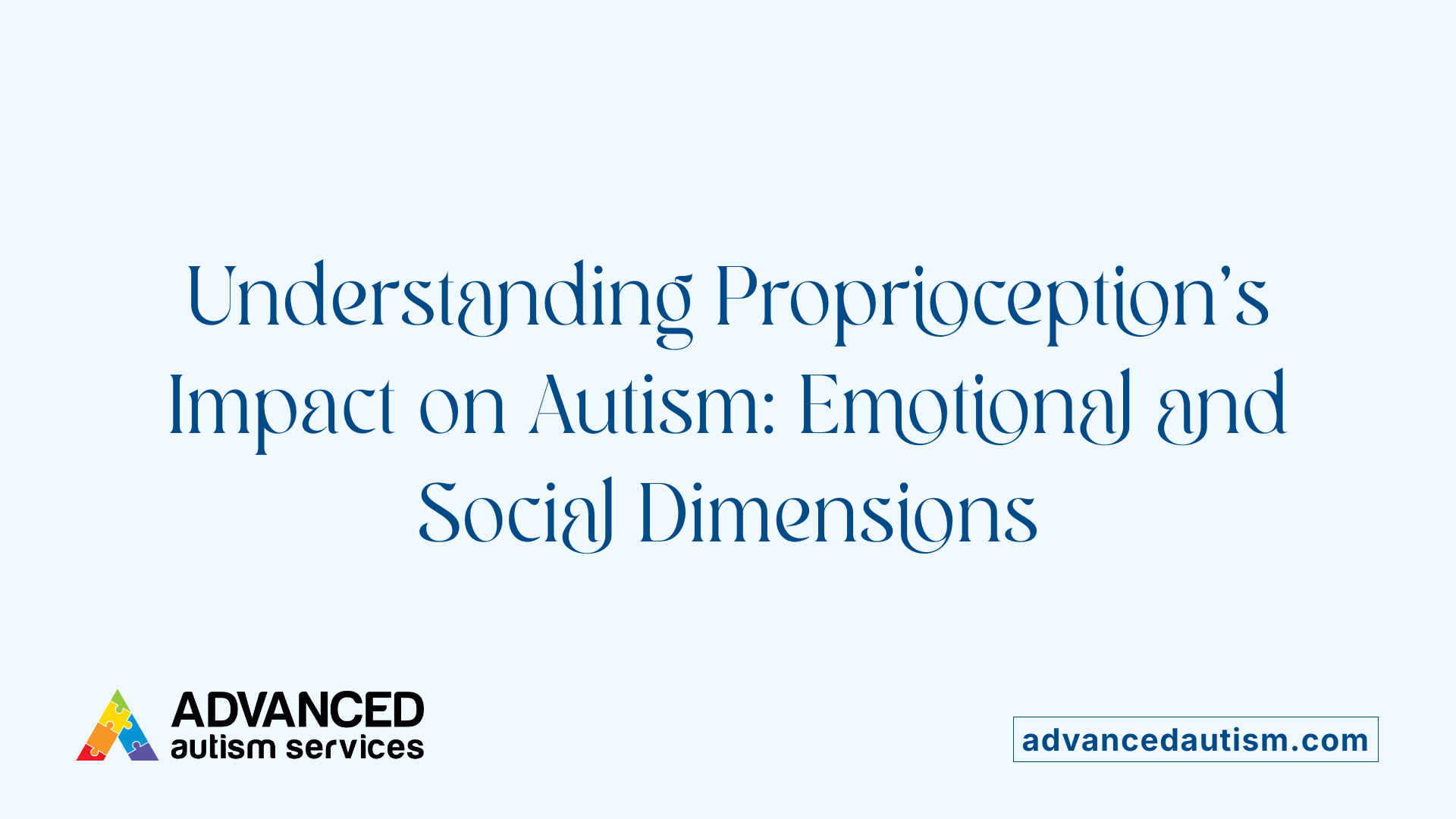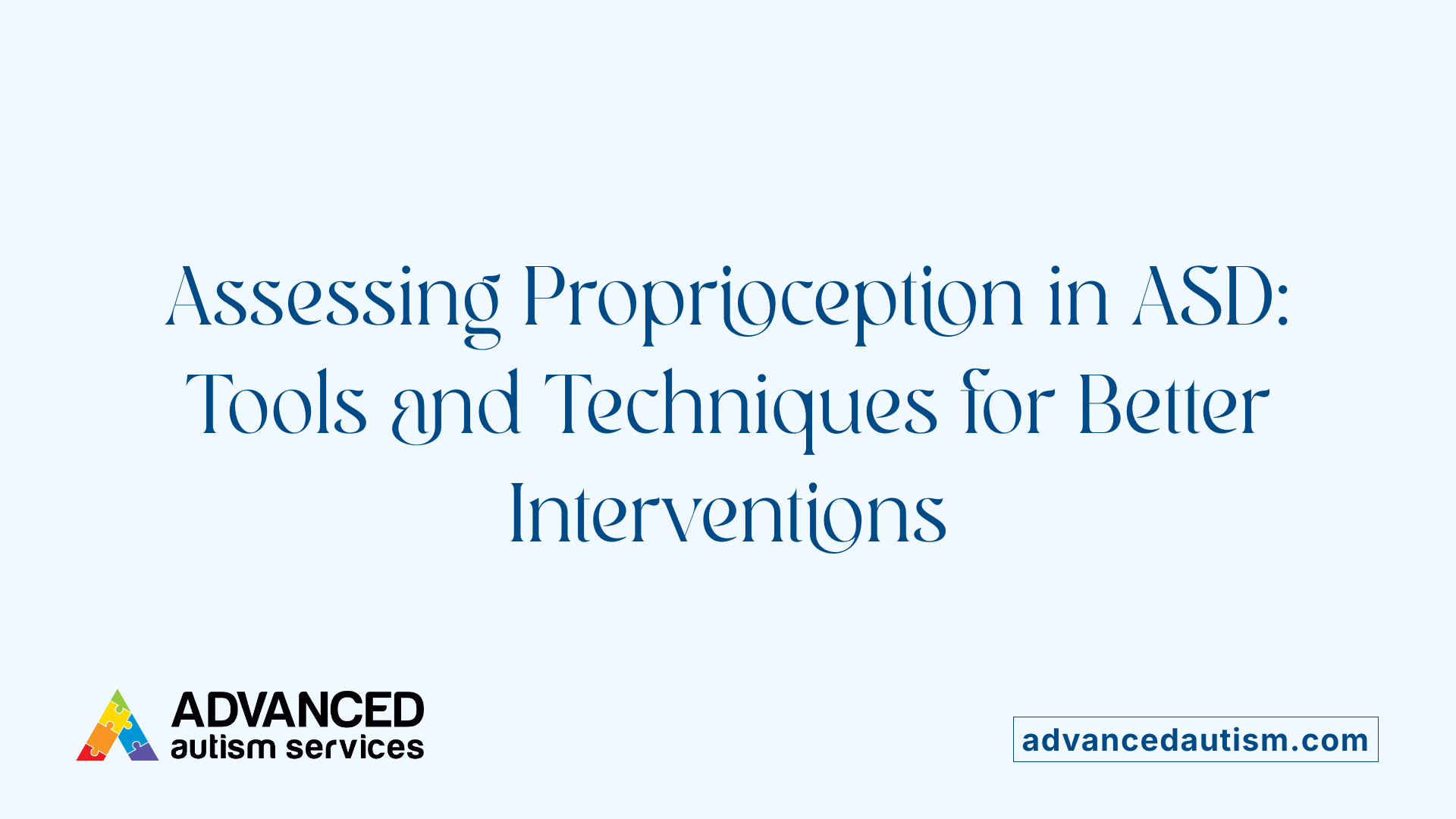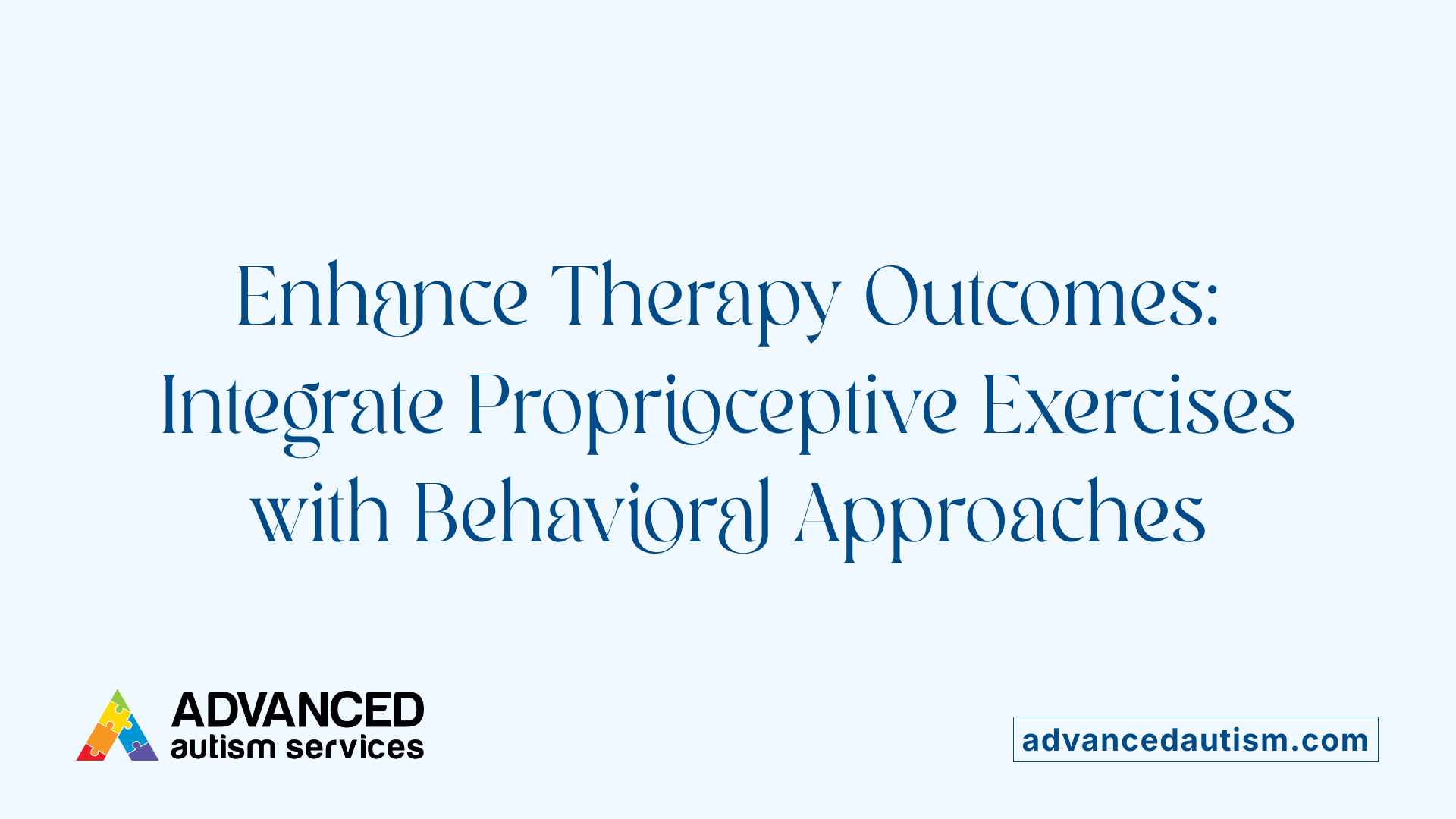Proprioception and Autism
Understanding Sensory Processing and Therapeutic Approaches in Autism
Exploring the Crucial Link Between Proprioception and Autism
Proprioception, a fundamental sense that enables our awareness of body position and movement, plays a vital role in emotional regulation and social responsiveness. Emerging research highlights how proprioceptive processing difficulties are particularly pronounced in children with autism spectrum disorder (ASD), influencing motor control, behavior regulation, and daily participation. This article examines these sensory aspects in depth, explores related behavioral therapies such as Applied Behavior Analysis (ABA), and discusses therapeutic interventions targeting proprioceptive deficits to support children with ASD.
The Role of Proprioception in Autism Spectrum Disorder
What are proprioceptive processing difficulties in children with autism?
Children with Autism Spectrum Disorder (ASD) experience distinct proprioceptive processing challenges that impact their motor control and behavior regulation. These difficulties often manifest as problems in motor planning, postural stability, and spatial organization, which are essential for coordinated movement and interaction with the environment.
In practical terms, children with ASD may display behaviors such as tiptoeing, pushing others or objects, or crashing and falling more often. These actions reflect underlying struggles with interpreting and responding to proprioceptive input accurately. Such challenges can disrupt their ability to regulate behavior and navigate social settings effectively.
The Comprehensive Observations of Proprioception (COP) tool helps identify these unique difficulties by assessing motor and behavior regulation across 18 observational items. Research supports the reliability and validity of COP in detecting proprioceptive deficits specific to ASD, distinguishing them from those seen in other developmental conditions or typically developing children.
Recognizing proprioceptive impairments is crucial, as they contribute to the broader difficulties seen in children with ASD, influencing both their movement capabilities and social responsiveness. Addressing these sensory processing issues through targeted interventions may enhance motor planning, postural control, and overall participation in daily activities, promoting improved emotional regulation and social engagement.
Proprioception's Connection to Emotional Regulation and Social Responsiveness in ASD

How does proprioception affect emotional regulation and social interaction in children with autism?
Proprioception, the sense of body position and movement, plays an important role beyond motor control—it is linked to emotional regulation and social responsiveness in children with autism spectrum disorder (ASD). Research shows that proprioceptive deficits in children with ASD correlate strongly with difficulties in managing emotions and engaging socially.
Proprioceptive challenges in children with ASD
Children with ASD often experience specific proprioceptive processing difficulties that affect their motor planning, feedback integration, and postural control. These proprioceptive challenges can manifest as behaviors like tiptoeing, pushing, or unexpected crashes and falls. Such motor and sensory issues can interfere with their ability to regulate behavior and navigate social environments effectively.
Comparing ASD with other neurodevelopmental conditions
While children with ASD primarily show problems in social responsiveness linked to proprioceptive deficits, children with cerebral palsy (CP) tend to exhibit more pronounced emotional knowledge deficits. This contrast highlights how proprioception affects different facets of development depending on the condition. These findings suggest sensory-based proprioceptive difficulties may uniquely shape emotional and social functioning in ASD, underpinning challenges in adaptive daily participation.
Clinical implications
Tools like the Comprehensive Observations of Proprioception (COP) help identify these proprioceptive issues, allowing clinicians to target interventions that may improve emotional regulation and social skills in ASD. Vestibular and proprioceptive training have also demonstrated benefits by enhancing sensory processing and reducing hyperactivity and impulsivity, further supporting the therapeutic potential of addressing proprioceptive deficits.
| Aspect | Children with ASD | Children with CP | Implications |
|---|---|---|---|
| Proprioceptive impact | Affects social responsiveness and motor planning | Affects emotional knowledge | Different domains affected necessitating tailored approaches |
| Emotional regulation | Challenges related to proprioceptive deficits | More emotional knowledge deficits | Interventions should address unique emotional/social needs |
| Therapeutic approaches | Vestibular and proprioceptive exercises improve sensory processing and behavior | Focus on emotional knowledge development | Sensory-based interventions beneficial in ASD |
Assessment of Proprioception in Children with Autism

What is the Comprehensive Observations of Proprioception (COP)?
The Comprehensive Observations of Proprioception (COP) is an assessment tool designed specifically to evaluate proprioceptive processing in children, particularly those with autism spectrum disorder (ASD). It consists of 18 observational items that focus on aspects of motor control and behavior regulation related to proprioception. This tool helps clinicians and researchers understand how children process sensory input from their muscles and joints, which influences their motor planning and postural stability.
How reliable and valid is the COP?
Extensive research has demonstrated that the COP possesses robust psychometric properties. Its reliability ensures consistent results across multiple evaluations, while its validity confirms that it accurately measures proprioceptive processing as intended. Validity and reliability are crucial because they guarantee the assessment's applicability for both clinical and research purposes, providing trustworthy data about a child's proprioceptive abilities.
How is the COP applied in clinical settings?
In occupational therapy practice, the COP is instrumental in identifying specific proprioceptive difficulties in children with ASD. By observing behaviors such as tiptoeing, pushing others or objects, motor planning challenges, and issues with postural control, clinicians can pinpoint areas that need targeted intervention. Using this detailed profile, intervention strategies can be tailored to address motor planning and sensory processing challenges, which may enhance the child's daily participation and social responsiveness. Moreover, recommendations based on COP assessments can guide proprioceptive and vestibular training designed to improve sensory processing and reduce associated behavioral difficulties.
Furthermore, ongoing research is encouraged to expand on COP's psychometric evaluation and explore its effectiveness in diverse populations and settings. This would enhance its clinical utility and help standardize proprioceptive assessments for broader application.
Overall, the COP provides a structured, evidence-based approach to understanding proprioceptive function in children with ASD, supporting better diagnostic precision and personalized therapeutic interventions.
Therapeutic Implications: Targeting Proprioception in Autism Interventions
How do vestibular and proprioceptive exercises impact children with ASD?
Vestibular and proprioceptive exercises have been shown to significantly reduce hyperactivity and impulsivity in children with Autism Spectrum Disorder (ASD). Notably, improvements were observed through decreased scores on the Vanderbilt ADHD Diagnostic Parent Rating Scale after these interventions. These exercises contribute to better sensory processing and modulation, which are crucial for managing hyperactivity related to sensory-driven behaviors common in ASD.
What are the effects of these exercises on sensory processing?
The training improves sensory profiles in children with ASD by enhancing the integration of proprioceptive inputs. While these exercises positively influence sensory processing and behavioral regulation, studies indicate they do not cause significant changes to vestibular function itself, as tested by the Post-Rotatory Nystagmus assessment. This suggests that the therapeutic benefits primarily target sensory modulation and motor behavior rather than altering fundamental vestibular capabilities.
Why is proprioception considered a therapeutic target in ASD interventions?
Given the proprioceptive processing difficulties inherent in children with ASD affecting motor planning and behavior regulation, targeting proprioception offers a promising approach to improving these challenges. Enhancing proprioceptive function can improve postural stability, motor control, and emotional regulation, which are often compromised in ASD. Incorporating vestibular and proprioceptive exercises as part of therapy may help balance emotion regulation and social responsiveness, making proprioception an important focus in clinical interventions.
Applied Behavior Analysis (ABA) Therapy: An Overview
What is applied behavior analysis (ABA) therapy?
Applied Behavior Analysis (ABA) therapy is a scientifically validated method focused on understanding and changing behavior through principles of learning. It seeks to increase positive behaviors like communication and social skills while reducing problematic behaviors. ABA involves individualized plans crafted by trained professionals such as Board Certified Behavior Analysts (BCBAs). Techniques in ABA vary and include structured methods like Discrete Trial Training (DTT) and more naturalistic, play-based approaches such as Pivotal Response Treatment (PRT) and the Early Start Denver Model (ESDM). Originally developed primarily for autism spectrum disorder (ASD), ABA is now applied to a broader range of developmental challenges. Its effectiveness is backed by decades of research, and current practices emphasize personalized goals that respect neurodiversity.
What are the core principles underlying ABA therapy?
At its foundation, ABA is based on behaviorism, focusing on observable behaviors and their modification through evidence-based strategies. The therapy employs reinforcement to encourage desirable behaviors and, when necessary, uses punishment to discourage unwanted ones. Teaching new skills includes techniques like prompting, fading, and shaping. ABA also analyses why behaviors occur, considering functions such as gaining attention, escaping demands, accessing tangible items, or seeking sensory input. Tools like task analysis and the ABCs (Antecedent-Behavior-Consequence) help in studying and influencing behavior patterns. The therapy adheres to seven guiding dimensions: applied, behavioral, analytic, technological, conceptual, effective, and generality to ensure interventions are scientifically sound and practically beneficial. Ultimately, ABA aims to foster meaningful behavior change that enhances daily living across settings, tailored to individual needs.
How ABA Therapy Supports Individuals with Autism
How does ABA therapy help individuals with autism?
ABA therapy helps individuals with autism by teaching essential skills such as communication, social interaction, and daily living skills through structured and personalized interventions. It uses reinforcement and behavior modification techniques to reduce challenging behaviors like self-injury while promoting positive behaviors.
Communication and social skill development
ABA focuses heavily on improving communication and social responsiveness, which are areas where many children with autism spectrum disorder face difficulties. Through targeted activities and naturalistic approaches, ABA promotes meaningful social interactions and language acquisition, helping children develop skills necessary to engage with others effectively.
Reducing challenging behaviors
Challenging behaviors such as hyperactivity, impulsivity, and emotional regulation difficulties are common in children with autism. ABA addresses these concerns by reinforcing desired behaviors and teaching alternative, positive responses. This approach not only decreases problematic behaviors but also enhances children’s emotional regulation and sensory processing.
Early intervention benefits
When applied early and intensively, ABA therapy can significantly improve social, communicative, and adaptive skills in children with autism. Early intervention lays the foundation for greater independence and smoother participation in daily activities, often leading to better long-term outcomes.
Overall, ABA therapy supports individuals with autism by building on their strengths and addressing areas like communication and behavior in a comprehensive, engaging way. It aims to foster meaningful development and inclusion without attempting to alter neurodiversity itself.
Who Provides ABA Therapy and the Qualifications Required?
Who provides applied behavior analysis therapy?
Applied Behavior Analysis (ABA) therapy is delivered by trained professionals specializing in behavioral interventions. The primary providers include Board Certified Behavior Analysts (BCBAs) and Registered Behavior Technicians (RBTs). These experts develop and implement individualized treatment strategies tailored to each child's unique needs, leveraging behavioral assessments and observations to enhance communication, social skills, and reduce challenging behaviors.
ABA therapy services are accessible in diverse settings such as homes, schools, specialized clinics, and community centers. Providers often collaborate with other healthcare professionals including psychologists, speech therapists, and occupational therapists to ensure comprehensive care. Organizations like Children’s Health in Texas exemplify structured programs offering ABA therapy through licensed specialists backed by leading authorities in the field.
What qualifications should ABA therapists have?
ABA therapists require a solid educational foundation typically beginning with a bachelor’s degree in behavior analysis, psychology, or a related area. Advancing their expertise, many pursue a master's degree specifically in applied behavior analysis or a similar accredited program.
Certification from the Behavior Analyst Certification Board (BACB) is essential. Key credentials include:
- Registered Behavior Technician (RBT)
- Board Certified Assistant Behavior Analyst (BCaBA)
- Board Certified Behavior Analyst (BCBA)
The level of certification correlates with the therapist’s role and responsibility in service delivery.
In addition to formal education, prospective ABA therapists must complete supervised practical experience ranging from 1,000 to 2,000 hours. Passing certification exams demonstrates their competency in behavior assessment, intervention planning, data collection, and ethical practices.
Ongoing professional development is critical, ensuring therapists remain aligned with current evidence-based methodologies and comply with ethical guidelines and state licensing requirements.
Collaborative roles in therapy delivery
ABA therapy is most effective when delivered within a collaborative care model. Therapists work alongside multidisciplinary teams—including occupational therapists, speech-language pathologists, and medical professionals—to holistically address the complex needs of children with autism spectrum disorder (ASD) and other developmental conditions.
This collaboration facilitates integrated interventions that support behavior regulation, social responsiveness, and communication skills, ultimately promoting greater independence and improved quality of life for children and their families.
Integrating Proprioceptive Interventions with Behavioral Therapies

How Can Sensory-Based Exercises Complement Applied Behavior Analysis (ABA)?
Combining vestibular and proprioceptive exercises with ABA therapy offers a promising approach to managing behaviors in children with autism spectrum disorder (ASD). Research indicates that such sensory-based exercises reduce hyperactivity and impulsivity effectively. When integrated with ABA, these interventions help enhance sensory processing and modulation, which are often challenging for children with ASD.
What Is the Impact on Behavior and Sensory Modulation?
Vestibular and proprioceptive training positively influences sensory profile development without significantly altering fundamental vestibular function, as measured by standard tests. This suggests the main benefit lies in improving sensory processing and behavior regulation. Improvements in proprioceptive acuity and reactive behavior have been linked to better emotional regulation and social responsiveness, addressing some of the core challenges faced by children with neurodevelopmental disorders.
What Are the Clinical Recommendations for Planning Interventions?
Clinicians are encouraged to use tools like the Comprehensive Observations of Proprioception (COP) to identify specific proprioceptive difficulties in their patients. Combining COP assessments with behavioral therapy plans can lead to targeted interventions. Integrating sensory exercises targeting proprioception could balance emotional and behavioral regulation and improve motor planning and postural control. Ongoing research supports tailoring therapy to individual sensory processing profiles, enhancing effectiveness when used alongside traditional behavioral therapies such as ABA.
Bridging Sensory Understanding and Behavioral Therapies for Autism
Proprioception plays an integral role in the motor, emotional, and social challenges experienced by children with autism. Advances in assessment tools like the Comprehensive Observations of Proprioception enable clinicians to better identify and understand these sensory issues. Meanwhile, Applied Behavior Analysis remains a cornerstone behavioral therapy that supports skill acquisition and behavior regulation through evidence-based, individualized interventions. Emerging research supports the integration of vestibular and proprioceptive exercises targeting sensory processing alongside ABA to enhance outcomes, reduce hyperactivity, and improve daily functioning. Together, these approaches highlight a comprehensive pathway to support children with autism, promoting their participation, well-being, and development in meaningful ways.
References
- Proprioception, Emotion and Social Responsiveness in ...
- Effectiveness of vestibular and proprioceptive exercises in ...
- Proprioceptive Processing Difficulties Among Children With ...
- How to Become an Applied Behavior Analyst (ABA) Therapist
- How to Become an ABA Therapist - School of Education
- Your Complete Guide to Becoming an ABA Therapist
- Principles of Applied Behavior Analysis
- Applied Behavior Analysis (ABA)
- The 7 Dimensions & Core Principles of ABA







